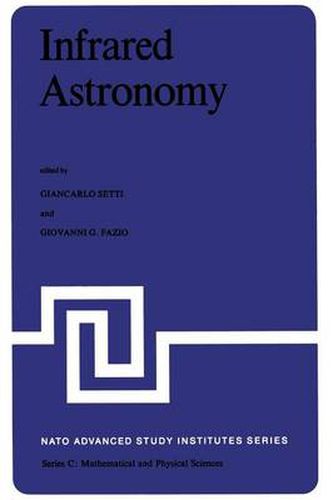Readings Newsletter
Become a Readings Member to make your shopping experience even easier.
Sign in or sign up for free!
You’re not far away from qualifying for FREE standard shipping within Australia
You’ve qualified for FREE standard shipping within Australia
The cart is loading…






This title is printed to order. This book may have been self-published. If so, we cannot guarantee the quality of the content. In the main most books will have gone through the editing process however some may not. We therefore suggest that you be aware of this before ordering this book. If in doubt check either the author or publisher’s details as we are unable to accept any returns unless they are faulty. Please contact us if you have any questions.
This volume contains a series of lectures presented at the 4th Course of the International School of Astrophysics, held in Erice (Sicily) from July 9 - July 20, 1977 at the E. Majorana Centre for Scientific Culture. The course was fully supported by a grant from the NATO Advanced Study Institute Programme. It was attended by 82 participants from 15 countries. Even though the infrared portion of the electromagnetic spectrum covers an extensive interval from the red region of the optical spectrum (10,000 A) to the microwave radio region (1 mm), its role in astronomy has been minimal until the last two decades. Until very recently, the only objects observed were the sun, the moon and the planets. A primary reason for this late development was the lack of sensitive detectors and the necessary cryogenic technology that must accompany their use. Recent progress in this technology has been paralleled by an ever increasing interest of astronomers in infrared observations, leading to a number of ex tremely important results in different branches of astronomy. This becomes evident when one realizes that in many astrophysical conditions most of the energy is found to be channeled into the infrared portion of the electromagnetic spectrum. Stars were detected that yield most of their radiation in the infrared; these objects present a new view of stellar evolution, both in the birth and death stages.
$9.00 standard shipping within Australia
FREE standard shipping within Australia for orders over $100.00
Express & International shipping calculated at checkout
This title is printed to order. This book may have been self-published. If so, we cannot guarantee the quality of the content. In the main most books will have gone through the editing process however some may not. We therefore suggest that you be aware of this before ordering this book. If in doubt check either the author or publisher’s details as we are unable to accept any returns unless they are faulty. Please contact us if you have any questions.
This volume contains a series of lectures presented at the 4th Course of the International School of Astrophysics, held in Erice (Sicily) from July 9 - July 20, 1977 at the E. Majorana Centre for Scientific Culture. The course was fully supported by a grant from the NATO Advanced Study Institute Programme. It was attended by 82 participants from 15 countries. Even though the infrared portion of the electromagnetic spectrum covers an extensive interval from the red region of the optical spectrum (10,000 A) to the microwave radio region (1 mm), its role in astronomy has been minimal until the last two decades. Until very recently, the only objects observed were the sun, the moon and the planets. A primary reason for this late development was the lack of sensitive detectors and the necessary cryogenic technology that must accompany their use. Recent progress in this technology has been paralleled by an ever increasing interest of astronomers in infrared observations, leading to a number of ex tremely important results in different branches of astronomy. This becomes evident when one realizes that in many astrophysical conditions most of the energy is found to be channeled into the infrared portion of the electromagnetic spectrum. Stars were detected that yield most of their radiation in the infrared; these objects present a new view of stellar evolution, both in the birth and death stages.